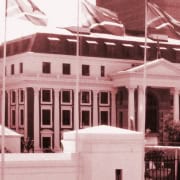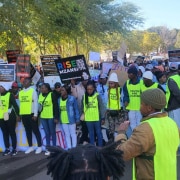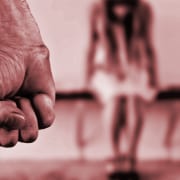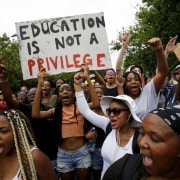|
Getting your Trinity Audio player ready...
|
By Kwazi Dlamini
As the world marks International Youth Day today, 12 August, it is time to acknowledge that the problems affecting the youth are problems affecting everyone.
South Africans are no strangers to debating difficult issues of political substance, be it on TV and radio or social media, at the workplace or even around the dinner table. If anything, many would agree that the politics of the country often overshadow much of the social-type discourse on any given day, which is no wonder that the country’s youth are well adjusted to taking part in politically-driven discussions, often with the courage to demand accountability from politicians.
A demonstration of such courage took place on this National Youth Day, 16 June, when some 2 000 young people armed themselves with a common purpose and placards conveying their dissatisfaction with the government and its disinterest in tackling issues facing them. They took part in the first civil society-led Youth Day Parade for Justice and Change across Tshwane, concluding their demonstration at the Union Buildings. Here they delivered a memorandum of grievances noting the need for urgent action in combating such concerns as rising unemployment, gender-based violence, violent crime, and corruption, among many others.
It was an act of significant sacrifice on a cold winter morning, and one that highlighted the urgency with which the government needs to account for the dangers facing one of its most vulnerable demographics.
In the two months that have passed since the parade – to which there has been no official response – several youth-related tragedies have gripped the nation’s attention and elicited a necessary debate over the political will, or lack thereof, to address the inadequacies of some of government’s policies relating to the issues raised on Youth Day.
Violence and death
The country recently woke up to news of the gang rape of eight young women between the ages of 19 and 22 on a mine dump in Johannesburg’s West Rand. Although the details of the gruesome incident surfaced quickly after it occurred, the perpetrators are still at large. The debate that has flared up since this fateful day, however, has been around the disruptive presence of illegal miners, or zama zamas as they’re known. These groups comprise mainly foreign nationals who have come into the country illegally. Over 100 of them have been arrested following the incident, mainly on account of their physical proximity to the crime scene, with the arrests followed by a number of community protests demanding that they be removed from mining sites that are close to these communities. The welfare of the eight women is on the back burner.
In late June, 21 young people died under yet-to-be-explained circumstances at Enyobeni tavern in East London. Most shockingly, all of them were under the legal drinking age, the youngest of the victims being 13 years old. A few days after that incident, five gunmen armed with AK-47 rifles stormed another tavern in Soweto randomly shooting at patrons and killing 16 of them. On the same night several other shootings were reported across the country. More incidents of similar nature have since been reported
Notably, the incidents occurred in an environment of greater political dissonance than the country has experienced since democracy, owing mainly to quarrels within the ANC. The party’s policies on a number of pertinent issues like economic development, immigration, and corruption are the centre of public discontent over its ability to govern. They speak directly to the violence mentioned above, and the consequence of such, particularly on the youth.
Youth issues are everyone’s issues
The Youth Day memorandum of grievances contained a range of issues. It was finally handed over to a public official after a significant wait for participants in the parade. Could the reluctance to send a recipient of the memorandum symbolise the reluctance to deal with rising unemployment, violent crime and gender based violence (GBV), opportunities lost to corruption, and other general service delivery concerns faced by the youth?
According to Irfaan Mangera, a youth programme manager at the Ahmed Kathrada Foundation (AKF) and one of the organisers of the parade, there has been no response from those in power to the memorandum, even after a follow-up email was sent to the director-general in the Presidency.
Those who have a duty to respond to the memorandum may have moved on to issues of greater urgency than those raised in the document, but Mangera and the thousands others who braved the cold winter morning to take a stance, have not. They cannot afford to lose focus on the very issues that pose a threat to the stable development of the country.
Those in the parade may not have all been conscious of it, but their choice to commemorate youth day with purpose showed the same courage as the young people of 1976 who took to the streets of Soweto and other black townships, to demand better education from the apartheid government.
On 16 June 46 years ago, more than 20 000 black students protested against the imposition of Afrikaans as a medium of instruction at black schools, under the apartheid government. The students were met with severe police brutality that resulted in over 20 fatalities, and hundreds of injuries. The day was declared a national holiday in 1995.
One would argue that although the publicly recorded purpose of the protests appears to be on the narrow issue of the language of instruction, the courage to stand up against it was fuelled by the recognition, by these black students, of their need to change the circumstances not only for themselves, but for all black people in South Africa. Their drive came from knowing that the issues may start with being forced to learn in Afrikaans, but the consequence is a grossly damaging outcome for future generations.
If anybody was going to arrest the course of apartheid’s contemptuous strategy, it was going to be young people.
Standing up for their rights
Although the issues raised by the 2022 group are diverse in nature, their common thread is that they have a grave impact on the youth, while there appears to be no political will to address them. Those governing our country, participants of the parade felt, were more interested in political power squabbles, while youth unemployment stands at 32.6% for young graduates, and at 22.4% for those between 25 and 34 years, and GBV has over time engulfed the country to the extent that the President Cyril Ramaphosa himself referred to it as the country’s second pandemic in 2020.
In the last year, crime has increased significantly, with a 68-murders-a-day record, the highest number in the last five years. Extensive corruption within government was laid bare in the Commission of Inquiry into Allegations of State Capture that lasted over three years.
A recent report by the Commission for Gender Equality reflects a rise in GBV and failure by the South African Police Service (Saps) to curb it. The report highlights insufficient resources, lack of training for Saps personnel dealing with GBV cases, and an absence of directly linked processes as contributing factors.
Corruption Watch’s Annual Corruption Trends report of 2021 showed that the Saps topped the list for the most corruption allegations in the sectoral reports segment. Besides their incompetence, it is quite easy to bribe the police to overlook certain crimes, including those of GBV.
Business opportunities within youth empowerment programmes initiated by the government are usually marred by corruption and at times used by officials to benefit themselves or those close to them. The National Youth Development Agency is one example in particular, the agency tasked with youth development through funding of businesses. For years the agency has been gripped by allegations of corruption and using the funds to enrich politically aligned individuals.
These are some of the hurdles that stand in the way of youth development, and could easily affect future generations, should the president fail to heed the call for immediate and decisive intervention.
Said Mangera at the end of the parade: “The AKF found that there is a yearning in society for young people to start leading, for young people to start acting, and this parade was the start of that. We are not going to be silent any more because the issues are very grave and if we do not do it now, the future might not be as hopeful as we desire. We cannot fully explore our full potential under these circumstances.”
Promises, promises, promises
Incidentally, Ramaphosa’s Youth Day speech acknowledged that the Covid-19 pandemic has had major economic and social effects on the country and the lives of young people. He added that the July 2021 unrest, the devastating floods that ripped through parts of the country earlier in 2022, and the pandemic aggravated apartheid’s grim legacy of poverty, unemployment, and inequality.
The same speech, however, indirectly lays the burden of much-needed economic recovery on the youth, a hypocritical assertion considering that the parade was meant to plead with the government to create a business-agreeable environment and an investor-friendly country.
A majority of the issues contained in the memorandum boil down to corruption and incompetence of those entrusted with the job of combating it. In 2020 Ramaphosa introduced ministerial performance agreements to track the performance of members of his cabinet. Whatever results have come out of the monitoring process, if any, have not been shared with the public almost two years later. His non-action stance has called into question his competence and performance as a president too.
The Youth Day parade may not make a significant and instant change to the current status of our country, but it does indicate that young people, with their exasperation, their energy, and their boldness, have a lot to add towards the growth of South Africa. As such, it is in the best interest of the country that the restless messages will continue to challenge the powers and change the course of their destiny.








